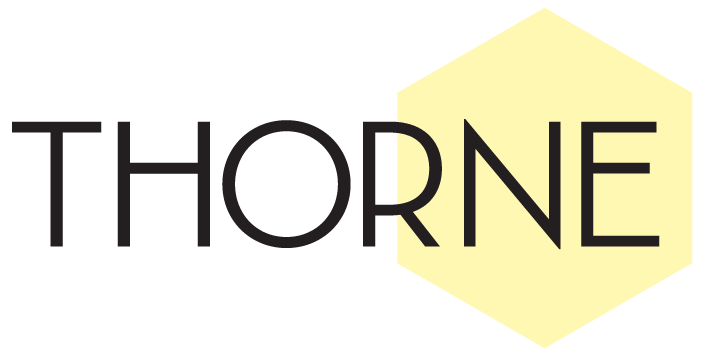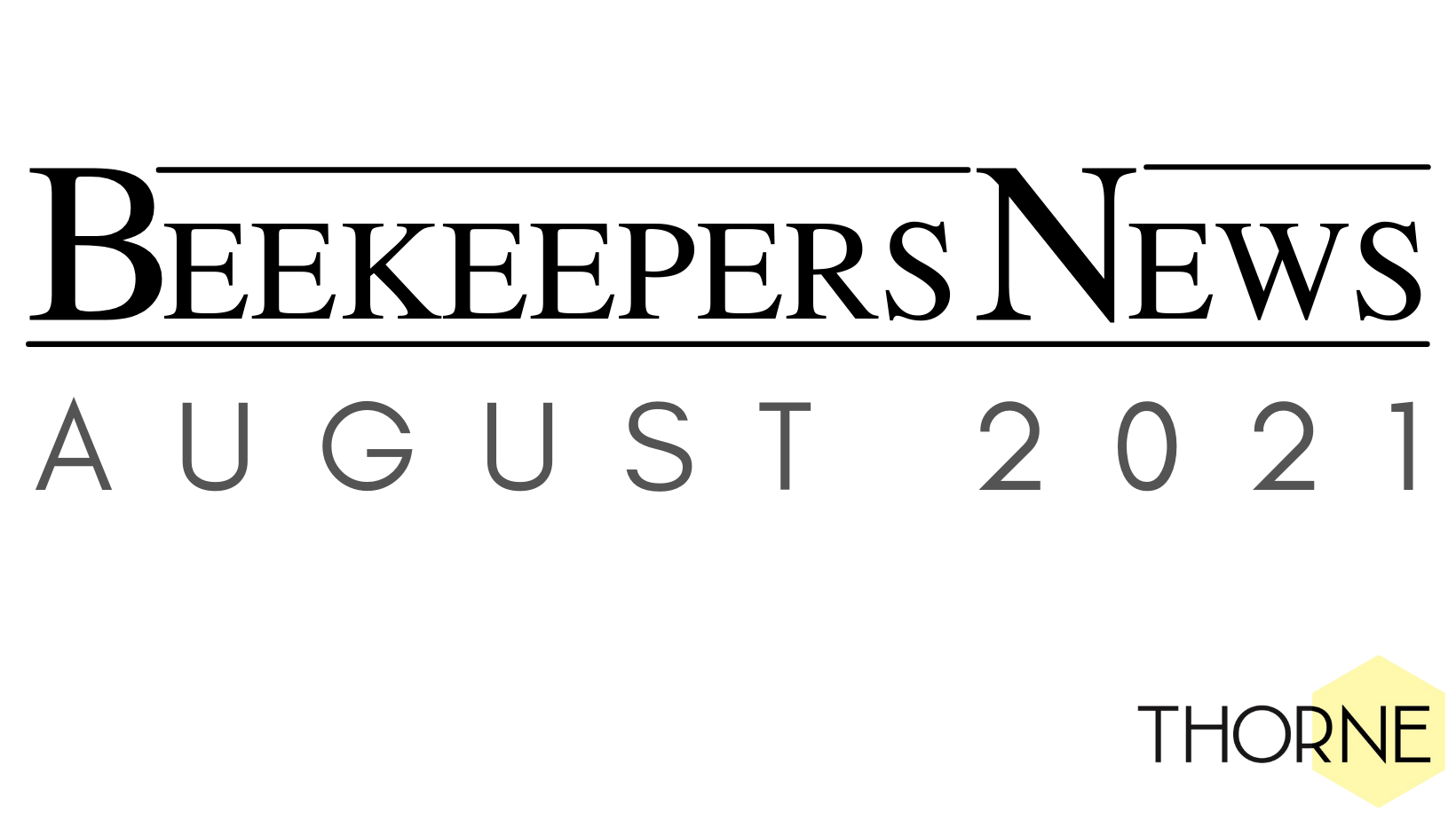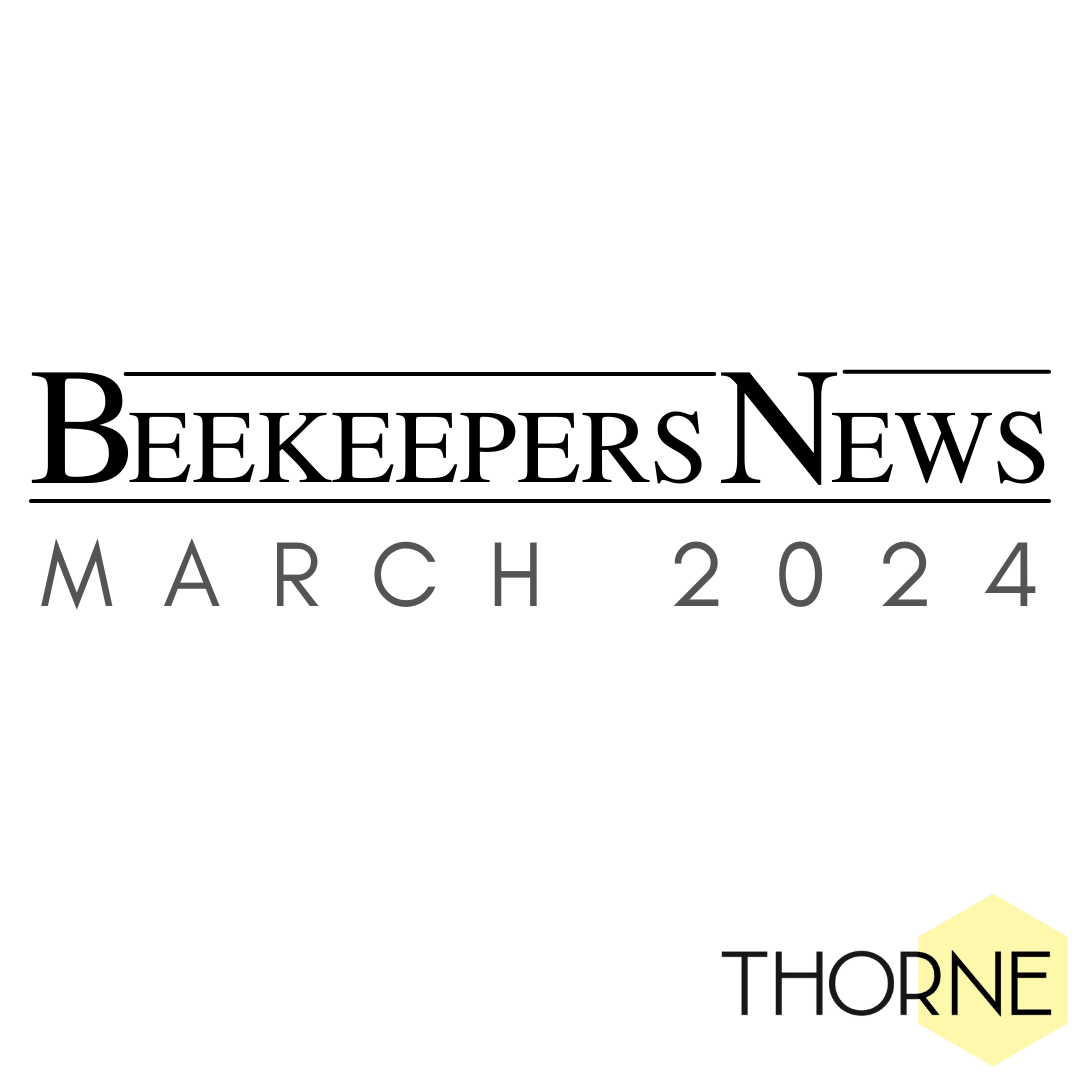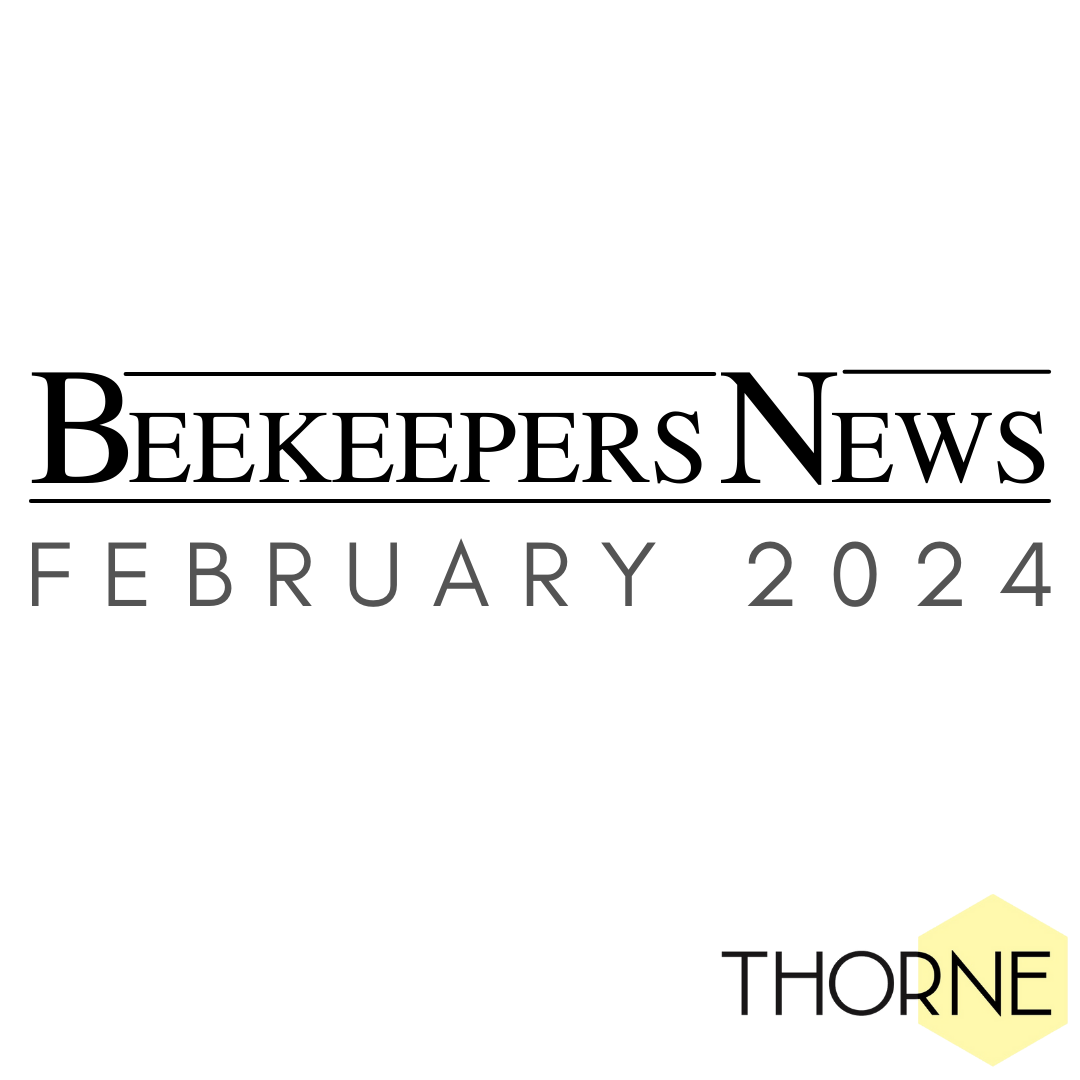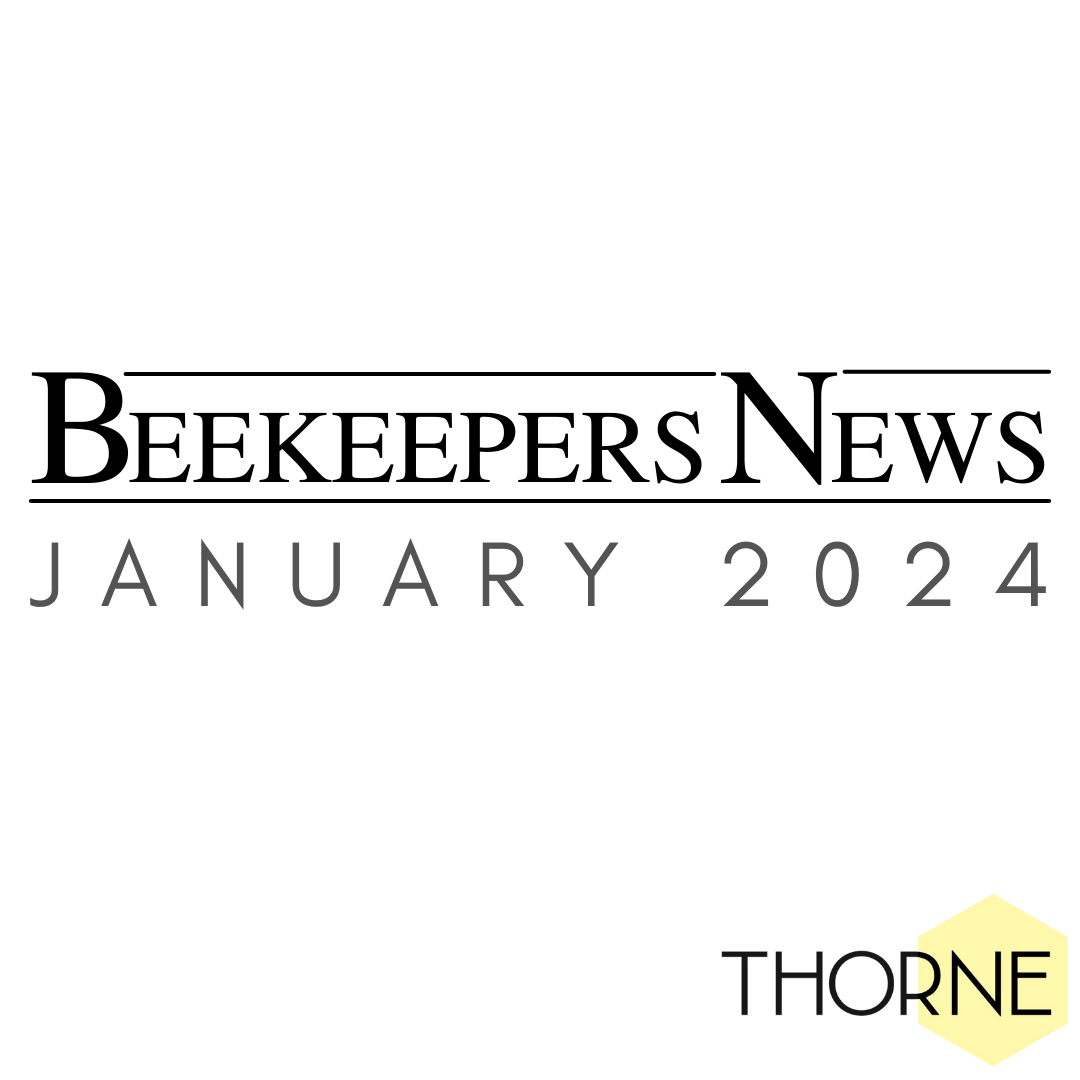Our sale items are now live on our website ready for you to order for collection from your nearest sale day, or the National Honey Show! All our usual bargains will be available including second quality hives parts and frames, beekeeping equipment and accessories. Look out for more information about the Rand Sale Day in upcoming newsletters, our Sale Day here at Thorne Headquarters includes an Open Day including factory tours!
Equipment Focus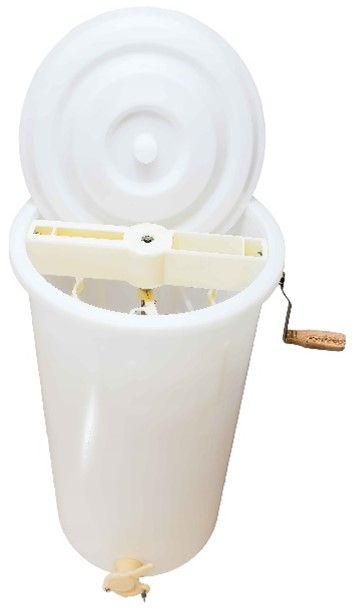
Budget Extractors
It seems like we are well and truly into honey harvesting season, and it is time to get sticky! Here we have three of our budget extractors, these are suitable for beginners, with around four hives maximum.
Firstly, we have this plastic extractor, it fits two frames tangentially. It is compatible with any size shallow frames, and also British Standard and Langstroth deep frames. Check out the video below showing how to go about using this piece of equipment.
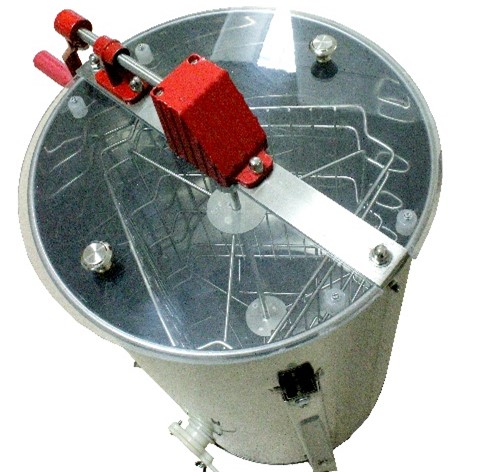 Next, we have the UniMel manual extractor made from stainless steel, again in a tangential format, but this takes three frames. It is compatible with most frames (apart from 14”x12”, Dadant deep, Langstroth Jumbo and Commercial deep). It has a split two-part plastic lid. You can see in the image to the left how the three frames fit into the robust stainless-steel cage.
Next, we have the UniMel manual extractor made from stainless steel, again in a tangential format, but this takes three frames. It is compatible with most frames (apart from 14”x12”, Dadant deep, Langstroth Jumbo and Commercial deep). It has a split two-part plastic lid. You can see in the image to the left how the three frames fit into the robust stainless-steel cage.
Finally, we have another UniMel, this time an electric 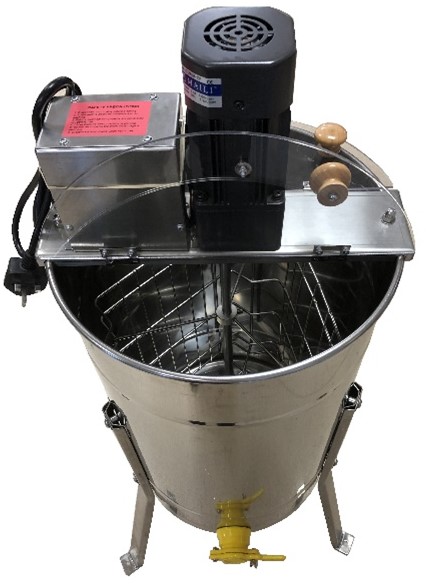 version. As the previously mentioned UniMel, this is made from stainless steel, and takes three frames in a tangential format.
version. As the previously mentioned UniMel, this is made from stainless steel, and takes three frames in a tangential format.
All our budget extractors come as full honey processing kits. These kits include three 15lb buckets, one 30lb bucket with fitted nylon valve, a nylon double strainer and an uncapping fork.
Good luck, and happy extracting!
Ask the Expert
Why bees need water
As beekeepers, we know that bees need food. We move our bees to places where there is an abundance of nectar in the hope that this will sustain the colony. When there is a dearth of forage, we supply them with syrup or fondant. What we often forget about however is that bees need water! This is not just because they need to drink but for several other reasons outlined below.
- To keep the hive cool: When it is hot outside, you can be sure it is hot inside a beehive! Bees use water to cool the hive using evaporative cooling; they spread water around the hive, mainly over sealed brood and around the rims of cells with larvae or eggs and then vigorously fan their wings, evaporating the water and in turn cooling the inside of the hive.
- To control the humidity: In a similar way to controlling the temperature, the worker bees use water to control the humidity inside the hive. Both temperature and humidity are crucial to have under control so that larvae develop properly, and bees do not overheat.
- To make use of stored food: Bees need water to dilute stored honey that has crystallized because they can’t use the food in this form. Without water therefore, they can't access these food sources.
- To feed the larvae: The nurse bees who feed the developing larvae eat large amounts of pollen and nectar but also water. This is so that their hypopharyngeal glands produce the royal jelly that is used to feed the larvae.
- To aid digestion: As with most animals, honeybees need water so that they can metabolise and digest their food.
So, make sure there is a water source nearby! This could be a naturally occurring one like a stream or pond, or it could be a little bowl with stones in that you put out yourself. Make sure any water you leave out for the bees is clean and that it is reasonably close to the hive so that, especially in winter when it is cold, they don’t have to fly far to reach it.
Blog
July
July has been a much calmer month here at Rand! All the nucs have been sent off and swarming has come to an end (thankfully!). This month has mostly been a case of inspecting the colonies for the usual things: presence of a queen, a decent amount of bees/brood and pests/diseases. One of the main issues we have had this month has been the hot weather. We have seen bees die in the hive from overheating before but usually with sufficient ventilation, this is avoided so we have opened up entrances to give them a bit of extra air. Vented suits have been our friends this month!
If any colonies have been found to be queen-less (after making sure there is definitely no virgin queen etc.), depending of the number of bees or brood in the hive, they have been re-queened or united with other colonies. We find that July is still early enough in the year to re-queen as long as there are plenty of bees and some brood in the hive. If there are only very few bees and little to no brood, then we unite them with stronger colonies using the newspaper method as we find this to be a simple and mostly successful way to unite. It is a good time of year to bump up colonies in strength instead of letting them dwindle because smaller colonies at this time of year are unlikely to make it through wasp season, let alone winter.
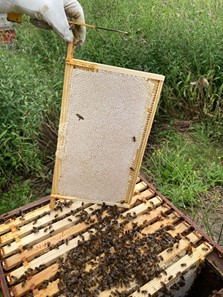 Talking of wasps, we have started to see a small number buzzing around the apiary. Some years are worse than others for wasps here but generally we do find we get quite a lot. Maybe it is the big laurel hedge that edges our Lakes apiary! This is one of the reasons we like to make sure the colonies are nice and strong. Any small or weak colonies are most likely to succumb to wasps. Soon we will be reducing the entrances down to one bee space to make it easier for the bees to defend their hive or we will use Wasp-Outs which have worked very well in the past.
Talking of wasps, we have started to see a small number buzzing around the apiary. Some years are worse than others for wasps here but generally we do find we get quite a lot. Maybe it is the big laurel hedge that edges our Lakes apiary! This is one of the reasons we like to make sure the colonies are nice and strong. Any small or weak colonies are most likely to succumb to wasps. Soon we will be reducing the entrances down to one bee space to make it easier for the bees to defend their hive or we will use Wasp-Outs which have worked very well in the past.
This month we have swapped out older combs for newer ones as we think this is one of the easiest ways to keep disease at bay. Plus, it is easier to see eggs in new comb! We have seen lots of stores being collected this month as well, so we are keen to leave the bees with plenty to keep them going into the Autumn too. Here you can see a great brood frame packed with stores.
Next month we will be trying to keep the pests at bay. This will include being on wasp patrol but also potentially starting our varroa treatment to make sure that the bees are healthy and happy going into winter.
Book review
Swarm Management with Checkerboarding
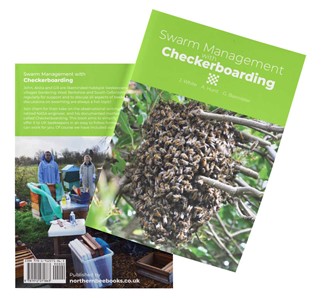 Book Review by Ann Chilcott, Scottish Expert Beemaster.
Book Review by Ann Chilcott, Scottish Expert Beemaster.
Swarm Management with Checkerboarding by J. White, A. Hunt, and G. Bannister
Published by Northern Bee Books, First Edition 2021, 32 Pages, Paperback: £9:95
ISBN:978-1-912271-86-3.
Swarm Management with Checkerboarding is about preventing swarms and producing more honey which will appeal to most beekeepers.
The authors have done a splendid job researching the subject and explaining how this non-invasive swarm prevention technique works. Based on work carried out in the 1990’s by American beekeeper Walt Wright, the team of beekeeping friends from the south of England trialled checkerboarding with five colonies over the 2019-20 season. None of these colonies swarmed that year and their honey harvest was massive. In contrast with traditional methods of swarm control and swarm prevention involving rearranging and manipulating the brood nest, this method relies on rearranging the honey super frames directly above the brood nest. The arrangement consists of supers with empty frames placed next to full frames. Well executed diagrams and lucid instructions make this
technique accessible to all beekeepers. This method works on the principal of creating nectar storage space above the brood nest and understanding the biology of honey bee swarming. Common to all living things, honey bees have two main objectives which are survival of the individual colony, and survival of the species through reproduction which is achieved through swarming. For the parent colony to survive once the swarm has departed it must shrink the brood nest so that there are not too many offspring for the remaining nurse bees to care for. This results in nectar encroachment in the brood nest which is called backfilling and a gives an important clue that the colony is preparing to swarm. A key trigger for swarm preparation is the solid layer of stores above the brood nest, so disrupting this by checkerboarding can prevent or delay swarming. The innate obduracy of the honey bee and its strong urge to store honey means that the colony continues storing nectar because it doesn’t have that reassuring layer of solid stores above the brood nest, or the urge to swarm. Like most beekeeping activities, checkerboarding needs to be planned well ahead for success which is why the authors started preparing the colonies in December for the upcoming season. They share with us a suitable timetable for the whole process.
The main advantages of checkerboarding are:
- Prevention or delayed swarming
- An increased hive population
- Larger honey harvests
- No need for invasive swarm control manipulations
- Winter hive preparation without much supplementary feeding if any.
Since climate, weather and beekeeping conditions vary considerably throughout the UK beekeepers in harsher northern climes may need to adapt the timetable to suit their areas. Solid combs of honey help insulate the winter cluster so disrupting this layer may compromise a colony in some climates. It would have been interesting to learn which crops the trial colonies foraged on, and if this system works well for oil seed rape and canola honey. Since both of these crops granulate quickly when cool, might spacing the honey- filled frames accelerate this process?
Even if you have no immediate plans to try checkerboarding, this book contains gems of valuable information for the curious beekeeper wanting to better understand swarming. It is attractively bound with colourful photographs on front and back covers and I am delighted to have it on my bookshelf.
If you have any questions or would like any more information on Swarm Management with Checkerboarding, feel free to contact John White, one of the authors, on smallcell@hotmail.com. You can also find him at our Windsor branch on Tuesdays and Wednesdays!
Bees for development
Restoring land for people and bees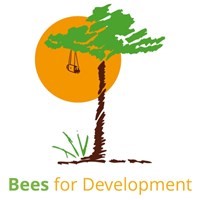
Over recent weeks, over 500 people have joined in to help restore land at a place called Alehuay, Ethiopia. Here, Bees for Development Ethiopia is working closely with the local community, providing expertise and support, and getting them set up to care for the site for the future. Gully stabilising work has been completed, and 17,000 tree seedlings have been planted. This will benefit the people of the area, and wildlife too.
https://beesfordevelopment.org/news/restoring-land-at-alehuay/
Last chance to bid in the Summer Bee Auction
There is still time to bid in The Summer Bee Auction. One hundred items are there to tempt you - so bid high to raise funds for the charity's vital work! Choose from original works of art, luxurious hampers, unique staycation experiences and much more - go to https://www.jumblebee.co.uk/summerbeeauction
Be quick - bidding closes 19:30 BST 1st August!
90th National Honey Show 21st to 23rd October 2021
We are delighted to be planning a live National Honey Show this October, and to invite you to join us at Sandown Park. With lingering uncertainty about whether there will be any restrictions due to COVID‐19 this Autumn, the committee have instigated some contingency planning, so please take note: some things will be a little different this year.
Admission to the Show: ONLY paid up membership or by pre booked tickets. Renew via our website shop or book day tickets 1st September – 11 October.
Special Show Schedule adapted for 2021 and new classes: view
Last date for early class entries 6th September. All others 4th October. No late entries 2021.
Junior entries encouraged. Email Fiona gensec@honeyshow.co.uk for leaflets: View
Fantastic programme of lectures with live streaming for those not able to attend the show.
Brilliant range of workshops. These have limited space: bookings open 1st September
Lectures from 2020 now available to view here
>Many of our usual trade hall supporters are looking forward to joining us at the show
More detailed information in our newsletter here and we will keep you updated via our website and Facebook page.
We look forward to seeing you back at Sandown Park, 21st to 23rd October 2021 at this year’s show.
www.honeyshow.co.uk
